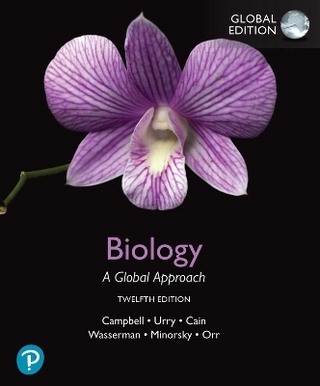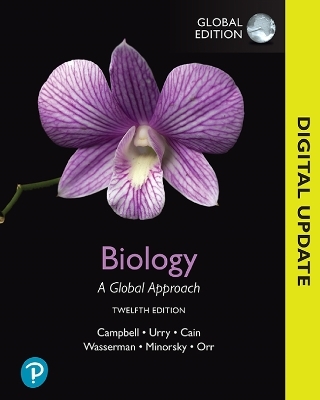
Photoproteins in Bioanalysis
Wiley-VCH Verlag GmbH (Hersteller)
978-3-527-60914-7 (ISBN)
- Keine Verlagsinformationen verfügbar
- Artikel merken
Sylvia Daunert is the Gill Eminent Professor of Analytical and Biological Chemistry and Professor of Pharmaceutical Sciences at the University of Kentucky. Her research interests lie in the area of bioanalytical chemistry, at the interface between analytical chemistry, molecular biology, and bioengineering. Dr. Daunert is the author or co-author of over 100 original research publications and of several patents in the area of bioanalytical chemistry. Her group's research has also been featured in textbooks, scientific journals, as well as in the press all over the world. Sapna K. Deo is Assistant Professor at the Department of Chemistry and Chemical Biology, Indiana University Purdue University Indianapolis. She gained her PhD in bioanalytical chemistry from the University of Kentucky in 2000,where she also held the posts of postdoctoral fellow and assistant research professor. Dr. Deo has co-organized a symposium for the American Chemical Society, of which she is a member. She is a reviewer for several journals in the field.
Preface.List of Contributors.1 The Photoproteins (Osamu Shimomura).1.1 Discovery of Photoprotein.1.2 Various Types of Photoproteins Presently Known.1.2.1 Radiolarian (Protozoa) Photoproteins.1.2.2 Coelenterate Photoproteins.1.2.3 Ctenophore Photoproteins.1.2.4 Pholasin (Pholas Luciferin).1.2.5 Chaetopterus Photoprotein.1.2.6 Polynoidin.1.2.7 Symplectin.1.2.8 Luminodesmus Photoprotein.1.2.9 Ophiopsila Photoprotein.1.3 Basic Strategy of Extracting and Purifying Photoproteins.1.4 The Photoprotein Aequorin.1.4.1 Extraction and Purifi cation of Aequorin.1.4.1.1 Hydrophobic Interaction Chromatography.1.4.2 Properties of Aequorin.1.4.2.1 Stability.1.4.2.2 Freeze-drying.1.4.3 Specifi city to Ca2+.1.4.4 Luminescence of Aequorin by Substances Other Than Divalent Cations.1.4.5 Mechanism of Aequorin Luminescence and Regeneration of Aequorin.1.4.5.1 Structure of Aequorin.1.4.5.2 Luminescence Reaction.1.4.5.3 Regeneration.1.4.6 Inhibitors of Aequorin Luminescence. 1.4.7 Recombinant Aequorin.1.4.8 Semi-synthetic Aequorins.1.4.8.1 e-Aequorins.References.2 Luminous Marine Organisms (Steven H.D. Haddock).2.1 Introduction.2.1.1 Non-luminous Taxa.2.1.2 Luminous Taxa.2.2 Taxonomic Distribution of Bioluminescence.2.2.1 Bacterial Luminescence.2.2.2 Dinofl agellate Luciferin.2.2.3 Cypridina (Vargula) Luciferin.2.2.4 Coelenterazine.2.2.5 Other Luciferins: Known and Unknown.2.3 Functions.2.3.1 Startle or Distract.2.3.2 Burglar Alarm.2.3.3 Counterillumination.2.3.4 Mating Displays.2.3.5 Prey Attraction.References.3 Beetle Luciferases: Colorful Lights on Biological Processes and Diseases (Vadim R. Viviani and Yoshihiro Ohmiya).3.1 Introduction.3.2 Beetle Luciferases.3.3 Bioanalytical Assays of ATP.3.3.1 Biomass Estimation and Microbiological Contamination.3.3.2 Cytotoxicity and Cell Viability Tests.3.3.3 Enzymatic Assays.3.4 Luciferases as Reporter Genes.3.4.1 Dual and Multiple Reporter Assays.3.5 Biophotonic Imaging in Animals: A Living Light on Diseases.3.5.1 Pathogen Infection in Living Models.3.5.2 Drug Screening.3.5.3 Tumor Proliferation and Regression Studies.3.5.4 Gene Delivery and Gene Therapy.3.5.5 Luciferase as Biomarkers for Cell Traffi cking Studies.3.5.6 Immunoassays.3.6 Biophotonic Imaging in Plants.3.7 Biosensors: Sensing the Environment.3.8 Novel Luciferases: Different Colors for Different Occasions.References.4 Split Luciferase Systems for Detecting Protein-Protein Interactions in Mammalian Cells Based on Protein Splicing and Protein Complementation (Yoshio Umezawa).4.1 Introduction.4.2 Protein Splicing-based Split Firefl y Luciferase System [23].4.2.1 Split Luciferase Works as a Probe for Protein Interaction.4.3 Split Renilla Luciferase Complementation System [33].4.3.1 Time Course of the Interaction Between Y941 and SH2n.4.3.2 Location of the Interaction Between Y941 and SH2n.References.5 Photoproteins in Nucleic Acid Analysis (Theodore K. Christopoulos, Penelope C. Ioannou, and Monique Verhaegen).5.1 Hybridization Assays.5.2 Quantitative Polymerase Chain Reaction.5.3 Genotyping of Single-nucleotide Polymorphisms.5.4 Conjugation of Aequorin to Oligodeoxynucleotide Probes.5.5 Development of New Recombinant Bioluminescent Reporters.5.6 Signal Amplifi cation by in Vitro Expression of DNA Reporters Encoding Bioluminescent Proteins.5.7 Conclusions.References.6 Bioluminescence Resonance Energy Transfer in Bioanalysis (Suresh Shrestha and Sapna K. Deo).6.1 Introduction.6.2 BRET Principle, Effi ciency, and Instrumentation.6.3 Comparison of BRET and FRET.6.4 Examples of BRET Donor-Acceptor Pairs.6.5 Applications of BRET in Bioanalysis.6.5.1 Homogeneous Assays.6.5.2 Protein-Protein Interactions and High-throughput Screening.6.6 Conclusions.References.7 Photoproteins as in Vivo Indicators of Biological Function (Rajesh Shinde, Hui Zhao, and Christopher H. Contag).7.1 Overview.7.2 Probes Used for in Vivo Bioluminescence Imaging.7.3 Probes Used for in Vivo Fluorescence Imaging.7.4 Detection Technologies.7.5 Current Applications.7.5.1 Oncology.7.5.2 Infectious Disease.7.5.3 Bacterial Infections.7.5.4 Viral Infections.7.5.5 Viral-mediated Gene Transfer.7.5.6 Cell Biology.7.5.7 Stem Cell Biology.7.6 Protease Sensors.7.7 Conclusions.References.8 Photoproteins as Reporters in Whole-cell Sensing (Jessika Feliciano, Patrizia Pasini, Sapna K. Deo, and Sylvia Daunert).8.1 Introduction.8.1.1 Biosensors Using Intact Cells.8.1.2 Reporter Genes in Genetically Engineered Whole-cell Sensors.8.2 The Luciferases.8.2.1 Bacterial Luciferases.8.2.1.1 luxAB Bioreporters.8.2.1.2 luxCDABE Bioreporters.8.2.1.3 Naturally Luminescent Bioreporters.8.2.2 Eukaryotic Luciferases.8.2.2.1 Firefl y Luciferase.8.2.2.2 Sea Pansy Luciferase.8.3 Aequorin.8.4 Fluorescent Proteins.8.4.1 Green Fluorescent Protein.8.4.2 Red Fluorescent Protein.8.5 Multiplexing.8.6 Applications.8.6.1 Stress Factors and Genotoxicants.8.6.2 Environmental Pollutants.8.6.3 Quorum-sensing Signaling Molecules.8.6.4 Antibiotics.8.7 Technological Advances.References.9 Luminescent Proteins in Binding Assays (Aldo Roda, Massimo Guardigli, Elisa Michelini, Mara Mirasoli, and Patrizia Pasini).9.1 Introduction.9.2 Protein-Protein and Protein-Ligand Interaction Assays.9.2.1 FRET and BRET Techniques.9.2.2 FRET and BRET Applications.9.2.3 Other Detection Principles.9.3 Antibody-based Binding Assays.9.3.1 Chemical Conjugation.9.3.2 Gene Fusion.9.3.3 Dual-analyte Assays.9.3.4 Expression Immunoassays.9.3.5 BRET-based Immunoassays.9.4 Biotin-Avidin Binding Assays.9.5 Nucleic Acid Hybridization Assays.9.6 Other Binding Assays.9.7 Concluding Remarks.References.10 Luminescent Proteins: Applications in Microfl uidics and Miniaturized Analytical Systems (Emre Dikici, Laura Rowe, Elizabeth A. Moschou, Anna Rothert, Sapna K. Deo, and Sylvia Daunert).10.1 Miniaturization and Microfl uidics.10.2 Photoproteins and Applications in Miniaturized Detection Systems.10.2.1 Green Fluorescent Protein.10.2.1.1 GFP in Miniaturized Microfl uidic-based Assays.10.2.2 Luciferase.10.2.2.1 Luciferase in Miniaturized Microfl uidic-based Assays.10.2.3 Aequorin.10.2.3.1 Aequorin in Miniaturized Microfl uidic-based Assays.10.3 Future Perspectives.References.11 Advances in Instrumentation for Detecting Low-level Bioluminescence and Fluorescence (Eric Karplus).11.1 Introduction.11.2 Low Light Levels.11.3 Methods of Coupling the Signal to the Detector.11.3.1 Proximity Focusing.11.3.2 Microscope Objectives.11.3.3 Macro Lenses.11.3.4 Fiber Optics.11.4 Evaluating the Performance of an Optical System.11.4.1 Numerical Aperture.11.4.2 Transmission Effi ciency.11.4.3 Magnifi cation.11.5 Detector Technologies.11.6 Selecting the Right Detector.11.7 Detector Sensitivity.11.8 Detector Noise.11.9 Statistics of Photon Counting.11.10 Summary.References.12 Photoproteins and Instrumentation: Their Availability and Applications in Bioanalysis (Leslie Doleman, Stephanie Bachas-Daunert, Logan Davies, Sapna K. Deo, and Sylvia Daunert).Aequorin.Obelin.Luciferases.Aequorea and Anthozoa Fluorescent Proteins.Coelenteraziness.Luminometers.Fluorometers.Portable Luminometers.Disclaimer.Subject Index.
| Verlagsort | Weinheim |
|---|---|
| Sprache | englisch |
| Maße | 186 x 247 mm |
| Gewicht | 608 g |
| Themenwelt | Naturwissenschaften ► Biologie |
| Naturwissenschaften ► Chemie | |
| ISBN-10 | 3-527-60914-8 / 3527609148 |
| ISBN-13 | 978-3-527-60914-7 / 9783527609147 |
| Zustand | Neuware |
| Haben Sie eine Frage zum Produkt? |
aus dem Bereich

